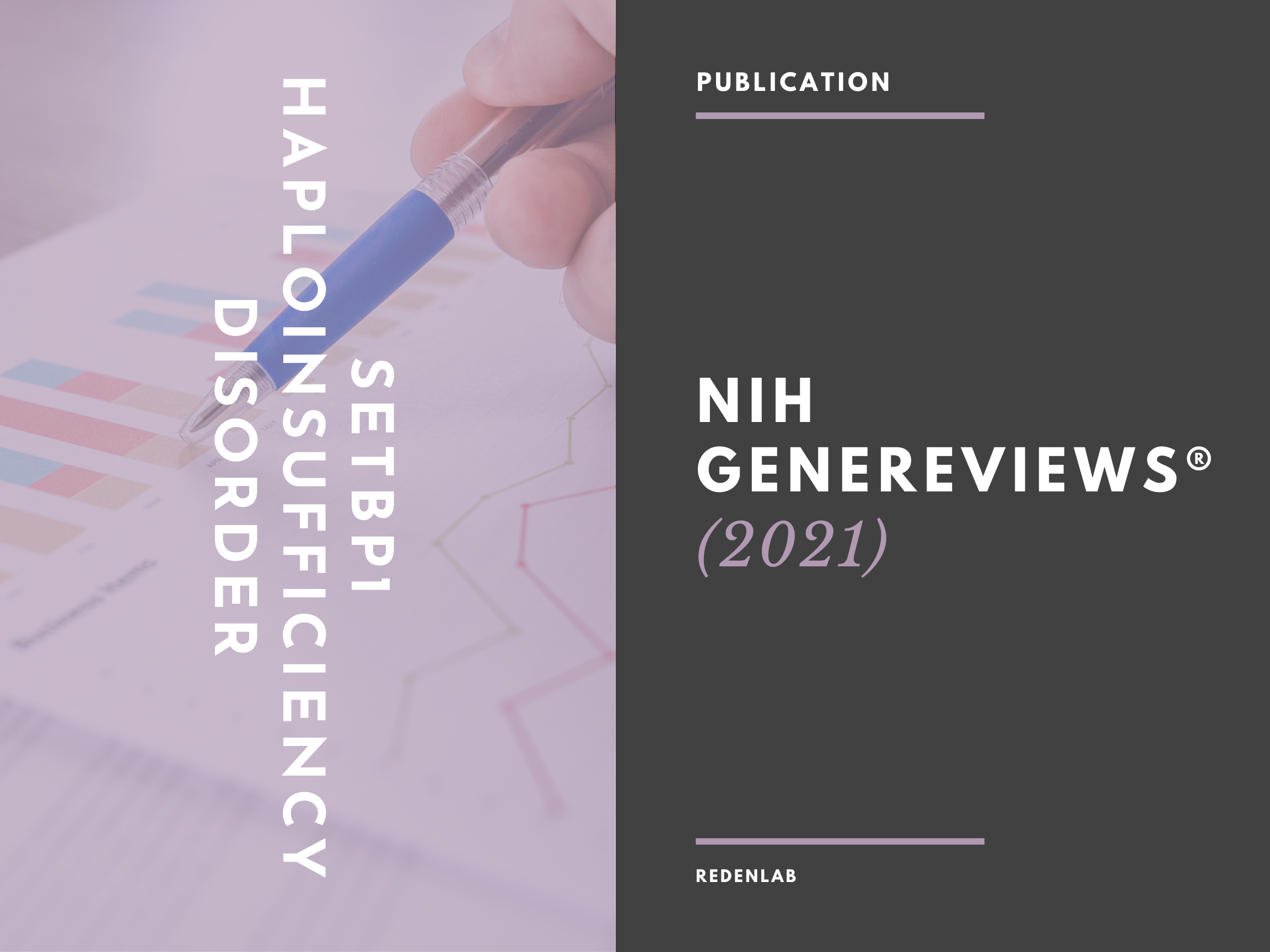NIH GeneReviews® on SETBP1 Haploinsufficiency Disorder

Rare genetically inherited neurodevelopmental disorders remain a huge diagnostic and therapeutic challenge in clinical medicine. Redenlab pediatric consultant Prof Angela Morgan co-authored an important NIH GeneReviews® on SETBP1 Haploinsufficiency Disorder.
Clinical characteristics.
SETBP1 haploinsufficiency disorder (SETBP1-HD) is characterized by hypotonia and mild motor developmental delay; intellectual abilities ranging from normal to severe disability; speech and language disorder; behavioral problems (most commonly attention/concentration deficits and hyperactivity, impulsivity), and refractive errors and strabismus. Typically children with SETBP1-HD whose intellect is in the normal or borderline range (IQ 80-90) were diagnosed following genetic testing for behavioral problems and/or severe speech and language disorders (respectively: the inability to produce sounds in words correctly, and deficits in the understanding and/or expression of words and sentences). To date, 47 individuals with SETBP1-HD have been reported.
Diagnosis/testing.
The diagnosis of SETBP1-HD is established in a proband with suggestive findings and a heterozygous pathogenic loss-of-function variant in SETBP1 identified by molecular genetic testing.
Management.
Treatment of manifestations: Treatment is supportive, often including multidisciplinary specialists from pediatrics, neurology, physiatry, occupational and physical therapy, speech-language pathology, psychiatry, ophthalmology, and medical genetics. Early intervention programs and special education programs may be needed to address developmental disabilities.
Surveillance: Monitoring of: feeding and weight gain; developmental/educational progress and needs; speech and language progress and needs; psychiatric and behavioral interventions; ophthalmologic interventions.
Genetic counseling.
SETBP1-HD is an autosomal dominant disorder typically caused by a de novo pathogenic variant. Most probands reported to date whose parents have undergone molecular genetic testing have the disorder as the result of a de novo SETBP1 pathogenic variant. Rarely, individuals with SETBP1-HD may have the disorder as the result of a SETBP1 pathogenic variant inherited from a parent with germline (or somatic and germline) mosaicism. Once the SETBP1 pathogenic variant has been identified in an affected family member, prenatal and preimplantation genetic testing are possible.
